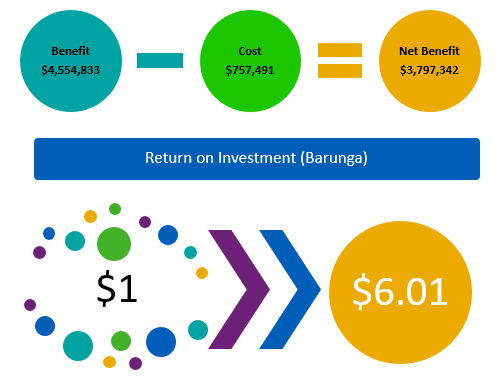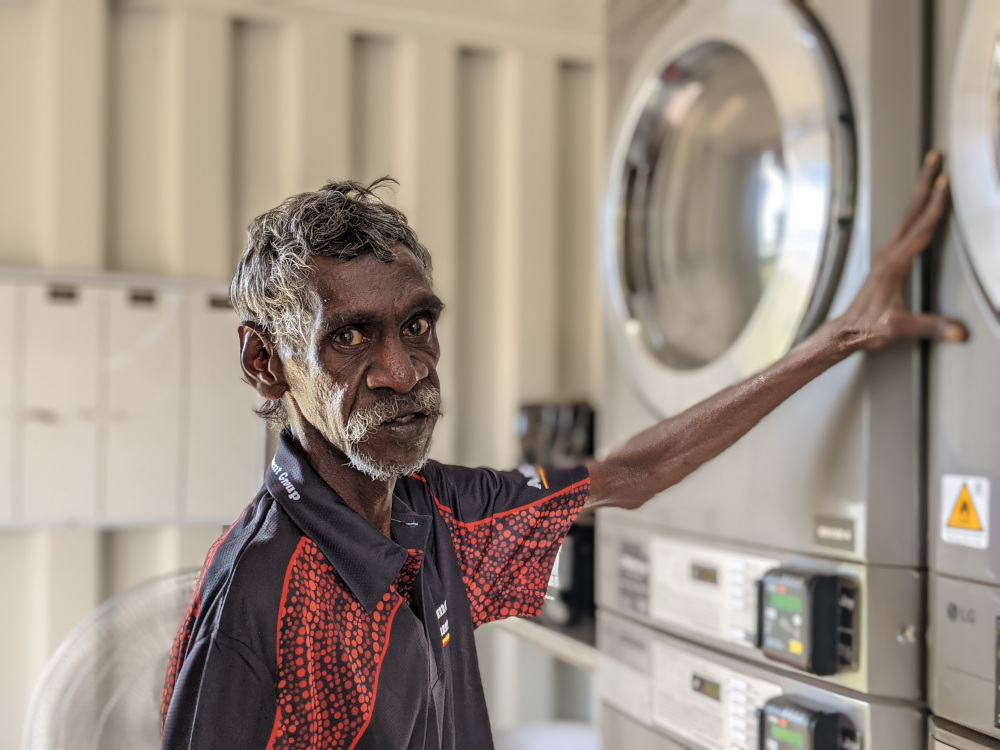Putting a dollar figure on the social returns of our laundries
In the past we’ve talked about the laundries being beneficial in two equally important areas: employment and health.
Recently though, we’ve started looking at the value of the laundry in not just social outcomes, but in monetary value. We want to know the savings in health and welfare costs when a community has a Remote Laundries unit, and whether it is worth the cost to build and operate a laundry in community.
Demonstrating return on investment
We’ve been working with KPMG to create a Social Cost-Benefit Analysis (S-CBA) on our laundries by studying the performance of the existing laundry in Barunga. The purpose of the report is to quantify the costs vs benefits associated with Remote Laundries Project. It demonstrates the return on investment (ROI) through the prevention of illness, welfare dependency and quality of life. While Barunga is the example, the report uses predictive modelling to make assumptions on what the ROI will look like when we are operating in multiple communities.
To grow, we need to prove impact
If we’re going to make this project grow and service communities throughout the NT, we need to demonstrate the project’s impact. This kind of evidence will help influence future funding streams, allowing us to continue expanding our reach.
This report also gives us assurance this is a project worth pursuing – it is one thing to think your project is worthwhile, but entirely different to be able to prove it.
Back to the report…
For the S-CBA to make sense, we need to understand the intended social and economic impacts of the project. In other words, we need to go back to the project design and objectives to describe what we want the laundries to do in community.

The process of quantifying the absence of disease, employment, and quality of life is complex, but worth a read if this stuff interests you. Cost benefit analysis
In short, the value of the laundries is linked to the prevention of both short-term and long-term illnesses and the savings associated with treatment costs, economic stimulation, and other associated savings made from improving the quality of life.
How much is a laundry worth?
The report is based on predictions and applies a spectrum of low, medium, and high reduction in primary disease.
It is assumed returns from the laundry currently sit in the middle, but more sophisticated data collection in the future will make these assumptions more accurate.
In its most simplistic form, the report shows a significant ROI. The following chart demonstrates the benefit of one laundry over five years.

So what will this look like when we have seven operating laundries? KPMG predicts a net benefit of $77m over a five year period.
The process of quantifying the absence of disease, employment, and quality of life is complex, but the following table breaks down the cost and benefit for the Barunga laundry over five years

Benefits of the laundry outweigh the costs
The benefits of the laundry drastically outweigh the costs of setting up and running the laundry. We believe our project is a relatively cheap way of helping with very expensive health and social issues in Aboriginal communities. Not to mention, helping people in community to have the basic benefits of washing clothes, bedding and towels regularly.
If you’re interested in learning more about the results of the report and which six communities are in line for a laundry, contact remotelaundries@aiggroup.org.au.

